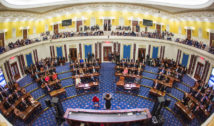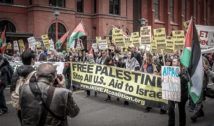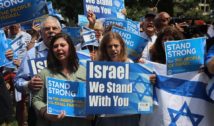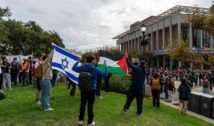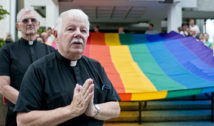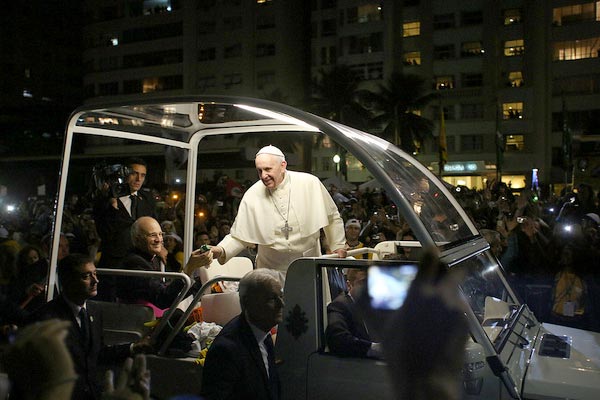
Pope Francis Breaks Tradition During Trip to Middle East
- By Krista R. Burdine --
- 28 May 2014 --

Pope Francis greets followers during a 2013 trip to Brazil.
This past weekend, Pope Francis visited the Middle East to promote peace among Muslims, Jews and Christians.
On the second day of his three-day tour, Pope Francis delivered simple yet powerful peace pleas during key stops in Israel and the West Bank. The stated purpose of this trip was to commemorate a handshake between Catholic and Orthodox leaders half a century ago; but as his record already indicates, this leader is forging his own trail to accomplish the objectives of his papacy.
In the first departure from tradition, Pope Francis visited with Palestinians before formally meeting with the Israeli leadership. After an early morning meeting with Palestinian President Mahoud Abbas, he performed an open air mass at the Church of the Nativity in Bethlehem. During this time, he made several statements validating the cause of the Palestinian people, and encouraging peace between Israel and Palestine. This marked the first time a Catholic Pope has made public reference to the “state of Palestine.”
After the mass, the Pope made a spontaneous stop at the wall separating Israel and the West Bank to reflect and pray. This brief event quickly became an iconic moment because, although he never took sides in the requests for peace, many interpret this moment as a gesture of support for Palestinians. The wall stands between Bethlehem and Jerusalem, preventing easy travel between Israel and the West Bank and underscoring the tension between the two groups. Whatever his reason for his spontaneous prayer, the Pope did expressly desire to encourage peace in this region.
As he met with President Abbas, Pope Francis invited him to meet at the Vatican in a month to pray with the President of Israel for peace for the common people. This invitation was later repeated to President Shimon Peres when the Pope arrived in Tel Aviv. Both leaders accepted the invitation, though it is likely to be little more than a symbolic gesture. Throughout these meetings with leaders of the Israeli and Palestinian groups, two friends and fellow religious leaders from Argentina traveled and visited with him. Muslim Sheikh Omar Abboud and Jewish Rabbi Abraham Skorka, with their presence, offered a symbol of unity to the Jewish and Muslim people struggling for identity in the Middle East.
At the end of the day, Francis met with Orthodox leader Patriarch Bartholomew of Constantinople to pursue ecumenism, the Pope’s underlying goal of promoting intra-faith unity between factions of the Christian church. Together they led a joint prayer service at the Church of the Holy Sepulchre in Jerusalem. Their meeting celebrates the anniversary of a similar meeting between the leaders of the Catholic and Orthodox churches, in Jerusalem fifty years ago. That meeting was the first conversation between the two divisions of the Christian church in 500 years. The Pope used the context of this meeting to urge Jews and Muslims not just to work toward peace with one another, but also for factions to seek unity within each faith so each one can stand strong and whole.
Pope Francis is using his almost unbelievable popularity to advocate for peace in the Middle East. During this visit, he spoke with urgency of the responsibility of all factions to promote peace by recognizing individual rights and maintaining common respect for the needs of all sides, “even if each side has to make certain sacrifices.” It seems the Pope takes seriously his imperative to fulfill the historical role of his position to help bring peace to the world.









